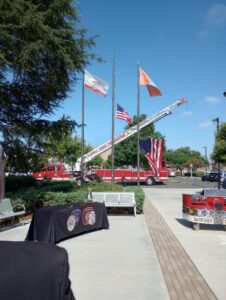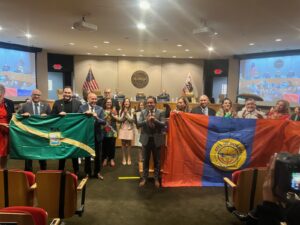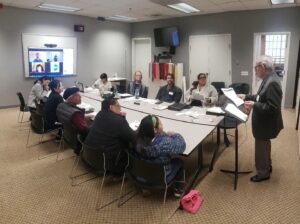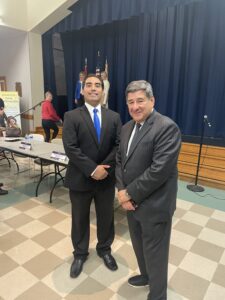By: Lawrence Christon
On Oct. 11, the Downey City Council voted on VenueTech’s request for a five-year extension on its contract to manage the Downey Civic Theater, reducing the contract period from five to two years.
VenueTech is lucky to have received two minutes. The Lafayette, California company has been virtually running Downey’s largest city-owned building into the ground ever since it took over operations in 2011. In the meantime, as Councilman Donald La Plante pointed out, it’s been costing the city $350,00 per annum, and that’s on top of the $400,000 yearly cost to Downey just to keep the theater’s lights on.
This has to have been among the worst commercial deals the city has ever made. If you scroll through the dates in which the theater is supposed to present music and entertainment acts to the general public, you’ll see that, for most nights in a given month, the theater is dark. Yes, it has offered music and occasional comedy acts like Al Jarreau and Arturo Sandoval, Rita Rudner and the late Louis Anderson, and, every three months, the Downey Symphony. But most of the rest of its available calendar year is given over to local amateur dance groups, civic ceremonies, school events, and other non-professional functions. The one thing the theater never stages is theater. No plays, no comedies, no musicals, no workshops, no co-productions, festivals, showcases, talent or playwrights competitions, or anything to place local talent, or aspiring talent, under a Downey spotlight for a general public
In the meantime, other nearby venues like the La Mirada theater and the Cerritos Center for the Performing Arts have had the last decade or more to develop their own programs and audiences, some of which used to attend Downey’s celebrated Civic Light Opera, which VenueTech was instrumental in squeezing out of business in 2013.
The larger story isn’t about VenueTech, however. It’s about the Downey civic and cultural leadership’s inability to make the theater a vibrant artistic hub for the life of the city. The city council of 2010 knew it had no business trying to run the 738 seat, now 66-year-old facility, which began as a successful children’s theater and ended with the increasingly engaging DCLO. All they had to do was look at the annual hemorrhage of red ink on the books to figure that one out. Nor did they have an answer for the lazy, incompetent community director’s virtual offer to give it away in 2009, before VenueTech began operating its Downey facility (there are six others) in 2011.
We have to accept that we’ve been had, and even congratulate VenueTech for being smart enough to know a good deal when they see one. But it doesn’t have to end there. The current city council, in its disarray, doesn’t know any more about theater than the 2010 bunch did. But Downey and regional kids should be crawling all over that building for daily classes and periodic performances to alleviate the essential loneliness and social alienation conferred by our universal addiction to screens. C. Bernard Jackson did it in 1967 with his Inner City Cultural Center in an essentially black and Latino neighborhood not unlike our own regional demographic, and often drew top actors, playwrights and critics to ICCC performances.
The city of Downey doesn’t have the knowledge or experience to do that. What it can do is re-conceive the theater as a nonprofit cultural or educational center, or both. The South Coast Repertory, one of the nation’s top ten regional theaters, started out in a Balboa marine swap shop so tiny that it was red-tagged. Only after it re-incorporated as a source of educational programs did it begin its legendary success.
Downey theater’s backstage space is so big that it could hide a jumbo jet. There’s no reason portable classrooms couldn’t go in there featuring theater classes, acting classes, music and dance classes, writing and design classes, and instruction in everything theatrical. Plus performances to see the kids strut their stuff. No one else in the region is doing it. This place could be jumpin’ once again, instead of looming in the night as one of the most sizable of Downey’s yawning dead zones.
Lawrence Christon is a former award-winning staff writer for The Los Angeles Times. He was born and raised in New York City, and served honorably in the United States Marine Corps. He has lived in Downey for decades.





